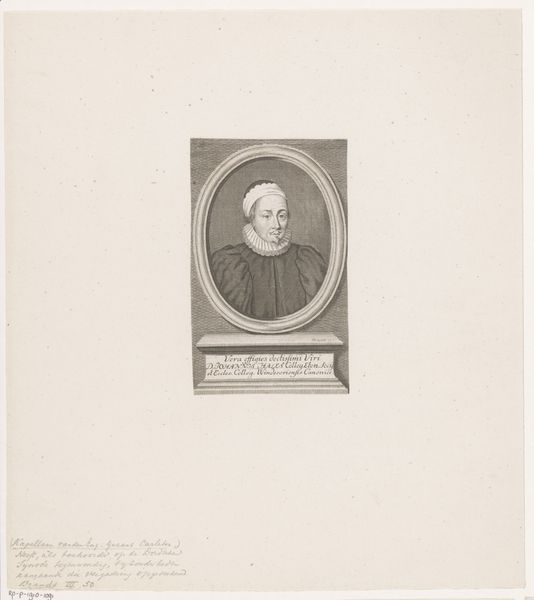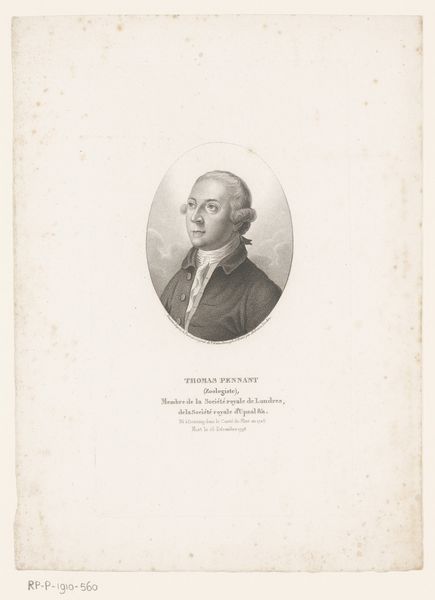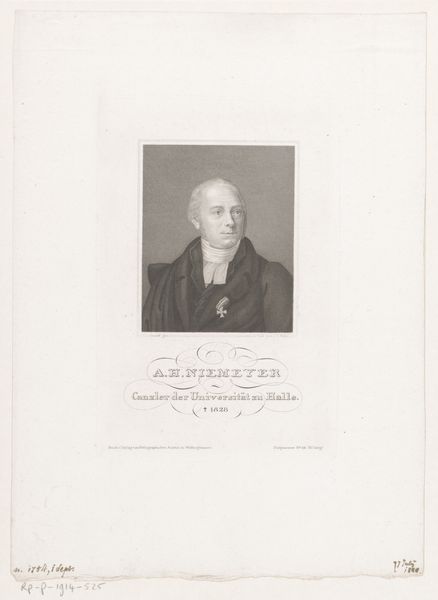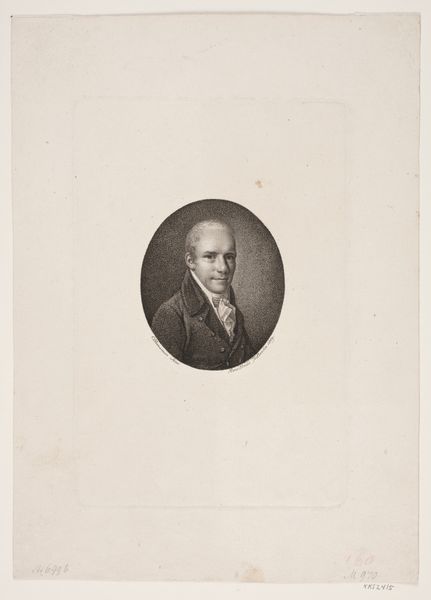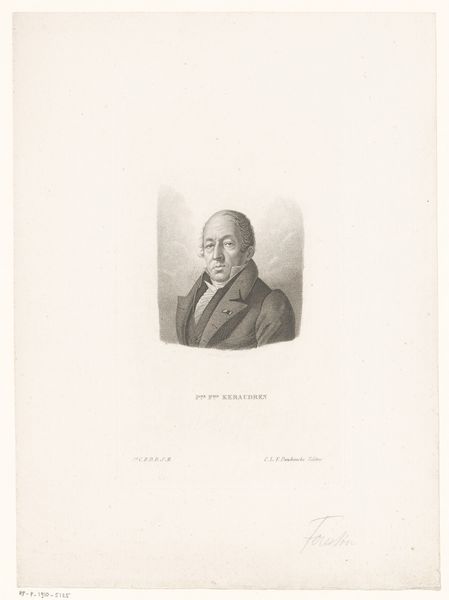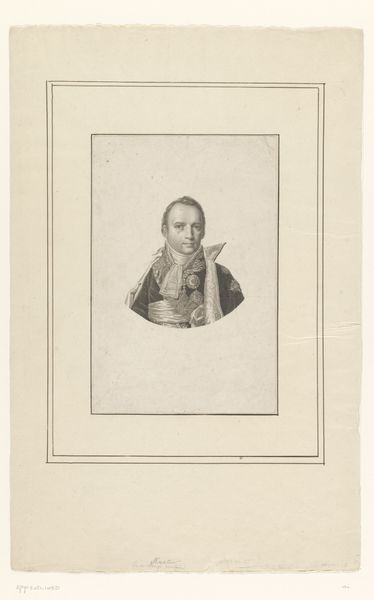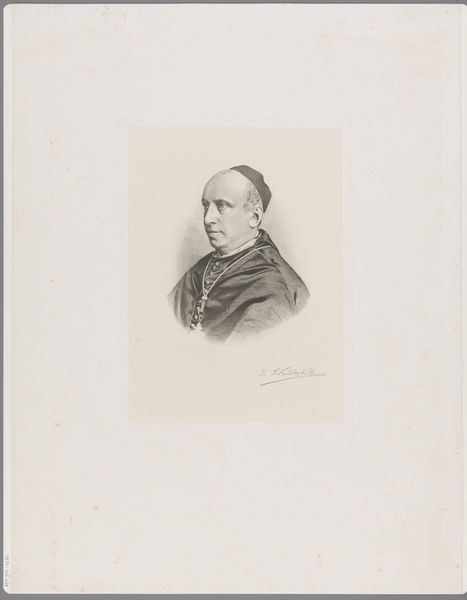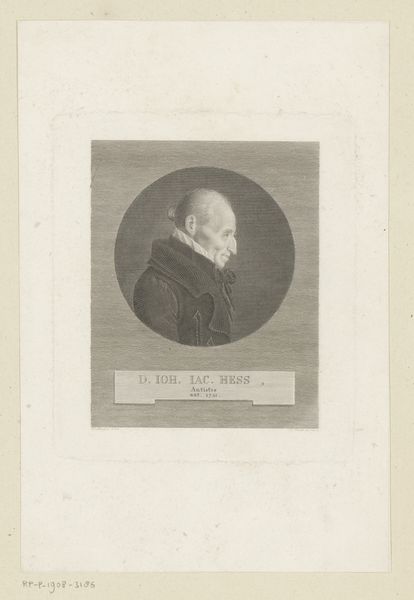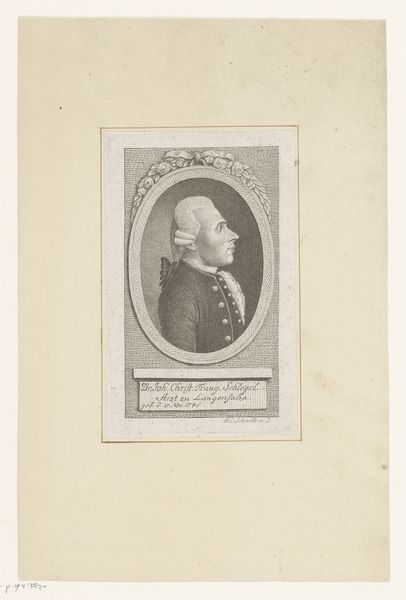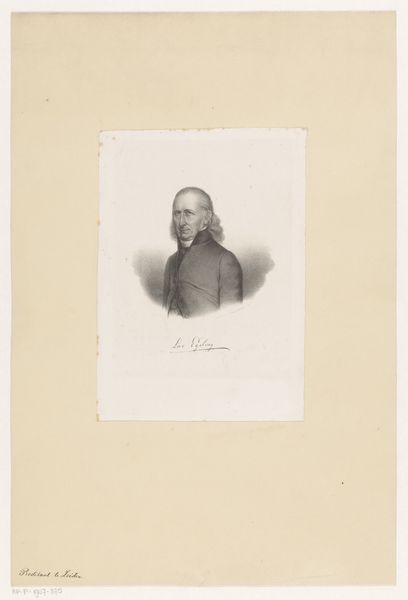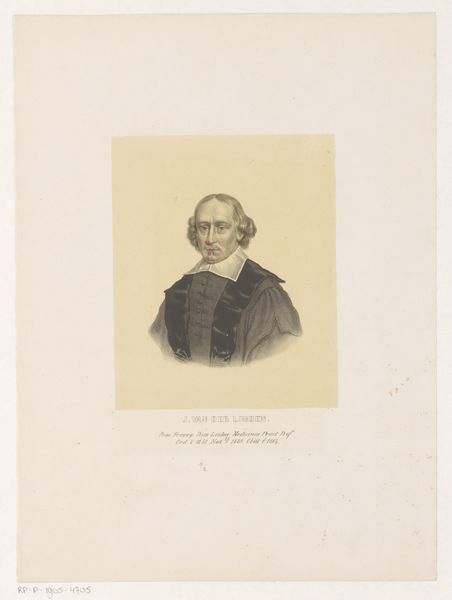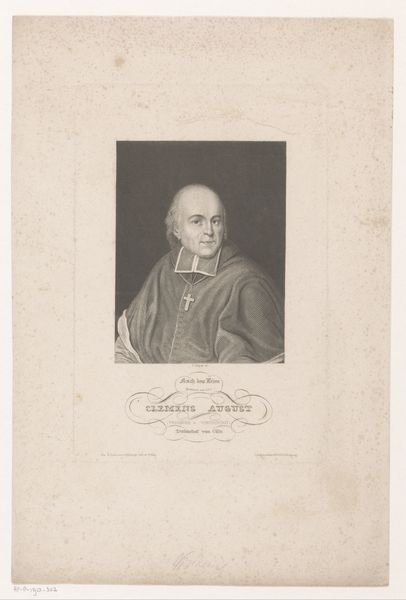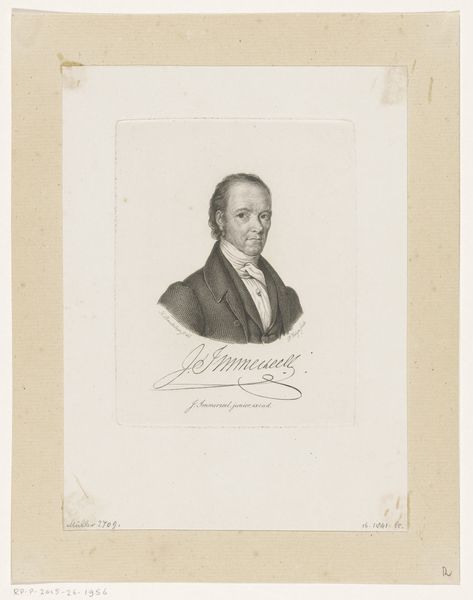
#
portrait
# print
#
romanticism
#
academic-art
#
monochrome
Dimensions: height 584 mm, width 449 mm
Copyright: Rijks Museum: Open Domain
Editor: So, this is Friedrich Hasler's portrait of Philipp Emanuel von Fellenberg, made sometime between 1818 and 1871. It's a print, giving it this stark, monochrome look. I find it quite austere. What stands out to you in this piece? Curator: Well, as a historian, I see a fascinating intersection of class, education, and representation. Von Fellenberg was a Swiss educator and agricultural reformer. Prints like this were crucial in disseminating images of influential figures and, therefore, their ideals. It speaks volumes about how the social elites wanted to be perceived and remembered, doesn’t it? What kind of message do you think they tried to promote? Editor: I see your point. There’s a certain…respectability in his stern gaze and formal attire. It does feel like a deliberate construction of an image. Maybe one of responsibility, civic duty? Curator: Precisely. This isn't just a face; it's a carefully curated performance of authority and virtue intended for public consumption. Consider the context: Romanticism's fascination with the individual and its role in shaping society. The print isn’t just showing von Fellenberg but suggesting his embodiment of particular virtues deemed valuable. Does the scale impact the reading of it for you? Editor: Hmm, now that you mention it, it is fairly small and easily reproducible as a print. Perhaps intended for personal consumption and not necessarily grandiose display like paintings. Curator: Indeed! And, crucially, that allows for wider circulation beyond an elite circle. By engaging with an object's production and reception history we gain insight into how social hierarchies operate in relation to artworks. Anything shift for you by thinking that way? Editor: Absolutely. I initially saw just a portrait. Now, I’m thinking about how it actively participated in constructing and distributing a certain kind of ideal…and who had access to it. Curator: And that's how art becomes a mirror reflecting societal values and power dynamics! Fascinating stuff, isn't it?
Comments
No comments
Be the first to comment and join the conversation on the ultimate creative platform.

